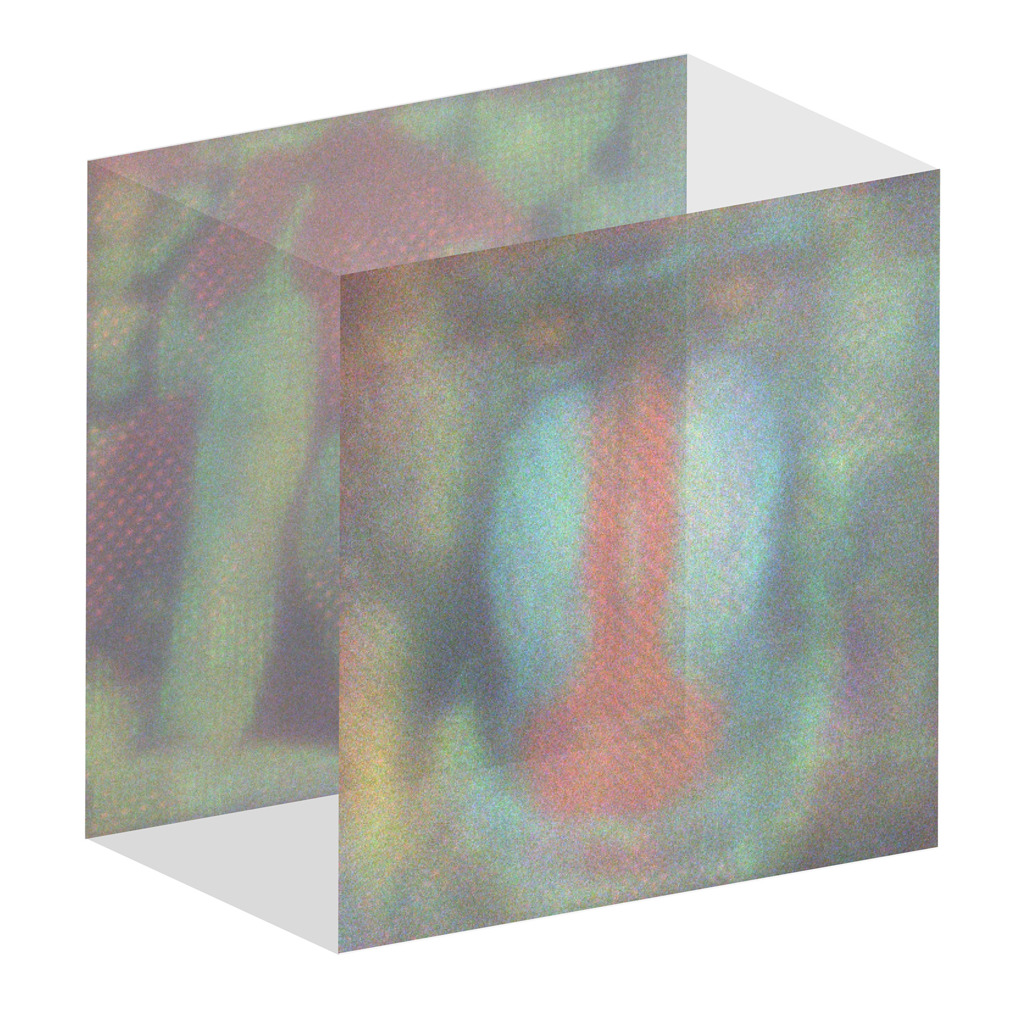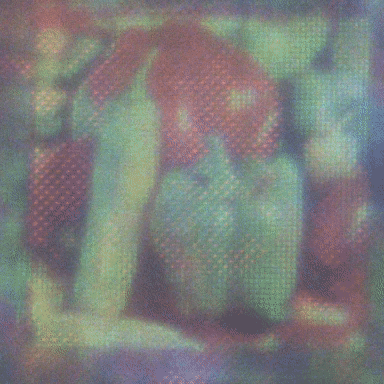Researchers use smartphone screen to create 3D layered holographic images
About
02 April 2024
Researchers use smartphone screen to create 3D layered holographic images
Full-color 3D display method holds promise for augmented and virtual reality

Caption: Researchers developed a 3D full-color display method that uses a smartphone screen, rather than a laser, to create holographic images. Shown are their experimental results, in which a continuous transition from the first layer to the second layer is observable.
Credit: Ryoichi Horisaki, The University of Tokyo
WASHINGTON — Researchers have developed a 3D full-color display method that uses a smartphone screen, rather than a laser, to create holographic images. With further development, the new approach could be useful for augmented or virtual reality displays.
Whether augmented and virtual reality displays are being used for gaming, education or other applications, incorporating 3D displays can create a more realistic and interactive user experience.
“Although holography techniques can create a very real-looking 3D representation of objects, traditional approaches aren’t practical because they rely on laser sources,” said research team leader Ryoichi Horisaki, from The University of Tokyo in Japan. “Lasers emit coherent light that is easy to control, but they make the system complex, expensive and potentially harmful to the eyes.”
In the Optica Publishing Group journal Optics Letters, the researchers describe their new method, which is based on computer-generated holography (CGH). Thanks to a new algorithm they developed, they were able to use only an iPhone and an optical component called a spatial light modulator to reproduce a 3D color image that consisted of two holographic layers.
“We believe that this method could eventually be useful for minimizing the optics, reducing costs and decreasing the potential harm to eyes in future visual interfaces and 3D display applications,” said Otoya Shigematsu, the paper’s first author. “More specifically, it has the potential to enhance the performance of near-eye displays, such as the ones being used in high-end virtual reality headsets.”
A more practical approach
Although CGH uses algorithms to produce images, the coherent light from a laser is typically required to display these holographic images. In a previous study, the researchers showed that spatiotemporally incoherent light emitted from a white chip-on-board light-emitting diode could be used for CGH. However, this setup required two spatial light modulators — devices that control the wavefronts of light — which is impractical because of their expense.
In the new study, the researchers developed a less expensive and more practical incoherent CGH method. “This work aligns with our laboratory’s focus on computational imaging, a research field dedicated to innovating optical imaging systems by integrating optics with information science,” said Horisaki. “We focus on minimizing optical components and eliminating impractical requirements in conventional optical systems.”
The new approach passes light from the screen through a spatial light modulator, which presents multiple layers of a full-color 3D image. Although this may seem simple, it required carefully modeling the incoherent light propagation process from the screen and then using this information to develop a new algorithm that coordinated the light coming from the device screen with a single spatial light modulator.

Caption: : The researchers used only an iPhone and an optical component called a spatial light modulator to reproduce a 3D color image that consisted of two holographic layers. The video shows their experimental results, in which a continuous transition from the first layer to the second layer can be seen.
Credit: Ryoichi Horisaki, The University of Tokyo
Holographic images from a smartphone
“Holographic displays that use low-coherence light could enable realistic 3D displays while potentially reducing costs and complexity,” said Shigematsu. “Although several groups, including ours, have demonstrated holographic displays using low-coherence light, we took this concept to the extreme by using a smartphone display.”
To demonstrate the new method, the researchers created a two-layer optical reproduction of a full-color 3D image by displaying one holographic layer on the screen of an iPhone 14 Pro and a second layer on a spatial light modulator. The resulting image measured a few millimeters on each side.
The researchers are now working to improve the technology so that it can display larger 3D images with more layers. Additional layers would make images look more realistic by improving spatial resolution and allowing objects to appear at several different depths, or distances, from the viewer.
Paper: O. Shigematsu, M. Naruse, R. Horisaki, “Computer-generated holography with ordinary display,” Opt. Lett., 49, 8 (2024).
DOI: doi.org/10.1364/OL.516005
About Optica Publishing Group
Optica Publishing Group is a division of the society, Optica, Advancing Optics and Photonics Worldwide. It publishes the largest collection of peer-reviewed and most-cited content in optics and photonics, including 18 prestigious journals, the society’s flagship member magazine, and papers and videos from more than 835 conferences. With over 400,000 journal articles, conference papers and videos to search, discover and access, our publications portfolio represents the full range of research in the field from around the globe.
About Optics Letters
Optics Letters has been publishing high-impact research in the field of photonics for over 45 years and offers rapid dissemination of new results in all areas of optical science with short, original, peer-reviewed communications. Optics Letters accepts papers that are noteworthy to a substantial part of the optics community. Published by Optica Publishing Group and led by Editor-in-Chief Miguel Alonso, Institut Fresnel, École Centrale de Marseille and Aix-Marseille Université, France, University of Rochester, USA. For more information, visit Optics Letters.
Media Contact
